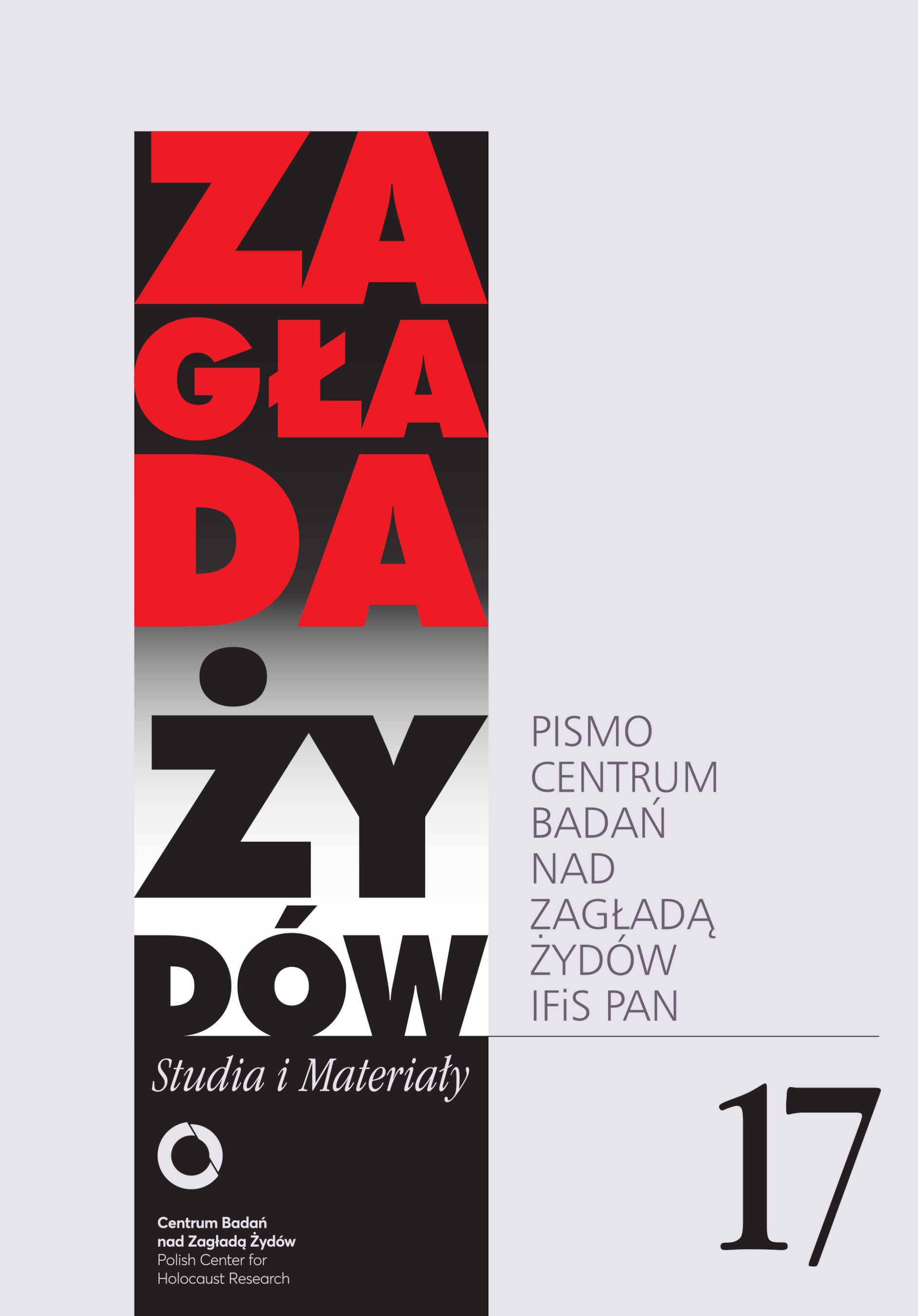“Berek is a voice of powerlessness in the face of cruelty; the desire that the Holocaust would not happen.” Jacek Leociak and Adam Mazur talk to Artur Żmijewski
Zagłada Żydów. Studia i Materiały, No. 17 (2021), pages: 606-618
Publication date: 2021-12-22
Abstract
Adam Mazur: Zanim przejdziemy do „Berka”, chciałbym zapytać, skąd wzięło się u ciebie zainteresowanie historią Zagłady? „Berek” otwiera pewien temat, który będzie w twojej sztuce już stale obecny, ale jest zupełnie niejasne, skąd wzięło się twoje zainteresowanie Zagładą.
Artur Żmijewski: Tak, to nie jest zbyt jasne. Chyba jestem tym „napromieniowany”. Pamiętam, że na studiach zrobiłem pracę, która była inspirowana zdjęciem z albumu Warszawskie Getto. Zdjęcie przedstawiało nagie, ułożone w stos ciała. Na podstawie tego zdjęcia zrobiłem coś w rodzaju rzeźbiarskiego studium aktu – studium martwego ciała i studium przemocy. W sztuce istnieje długa tradycja przedstawiania żywego i martwego ciała.
Wydaje się, że moje zainteresowanie Zagładą pojawiło się razem z boomem wydawniczym lat osiemdziesiątych. Wtedy wydawano wiele wspomnień ocalonych z Holokaustu, ale też zapisków tych, którzy Zagłady nie przetrwali. Dużo tego przeczytałem. Byłem wtedy uczniem I Liceum Ogólnokształcącego na ul. Felińskiego, na Żoliborzu. Profil nauczania, jeśli mogę tak to ująć, był antysemicki. Na moje szczęście byłem fatalnym uczniem, nie czytałem lektur szkolnych, nie odrabiałem lekcji, nie słuchałem nauczycieli. Wagarowałem. I na tych wagarach czytałem własne lektury. I dzięki temu, w tych komunistycznych czasach, „ocalałem prowadzony na rzeź”. A jak już byłem duży, to kupiłem pięciotomową historię obozu Auschwitz i przeczytałem ją od początku do końca. Wpadłem w to, wciągnęło mnie jak bagno, nie umiałem tego zamknąć. To był rodzaj dziwnego oświecenia, wtajemniczenia – rytuał przejścia do prawdziwego świata. Chłonąłem te lektury jak gąbka. Później przyszło opamiętanie – powodowany instynktem samozachowawczym, oddałem całą tę bibliotekę koleżance ...
Keywords
Artur Żmijewski, Berek
License
Copyright (c) 2021 Zagłada Żydów. Studia i Materiały

This work is licensed under a Creative Commons Attribution-NonCommercial-NoDerivatives 4.0 International License.
https://creativecommons.org/licenses/by-nc-nd/4.0
Other articles by the same auhtor(s)
- Jacek Leociak, Paweł Dobrosielski, Spory o Grossa. Polskie problemy z pamięcią o Żydach , Zagłada Żydów. Studia i Materiały: No. 13 (2017)
- Jacek Leociak, On the Abuses in Research of the Holocaust Experience , Zagłada Żydów. Studia i Materiały: 2010: Holocaust Studies and Materials
- , The Image of Poles in the Writings of Jews from the Warsaw District , Zagłada Żydów. Studia i Materiały: No. Holocaust Studies and Materials (2013)
- Jacek Leociak, Anniversaries of the Warsaw Ghetto Uprising in public discourse (with special reference to the years 1943–1944, 1968 and 2023) , Zagłada Żydów. Studia i Materiały: No. 19 (2023)
- Jacek Leociak, Michał Głowinski , Zagłada Żydów. Studia i Materiały: No. 19 (2023)
 English
English
 Polish
Polish




